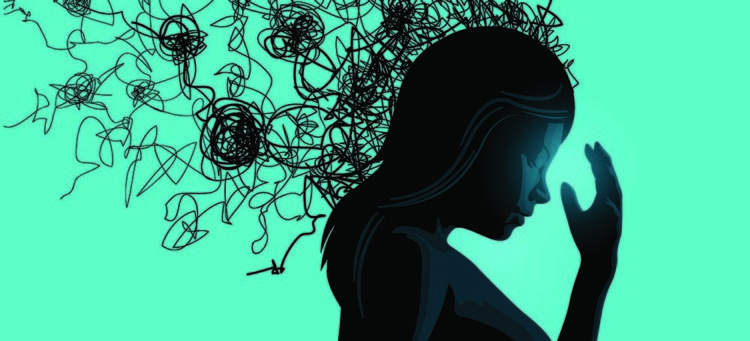
Conversations
Children : drug abuse and mental illness: Altered States : Facts concerning children prone to drug abuse and mental illness
October, 2019
In some ways, alcohol and drugs are a normal part of growing up. More than a few of us have fond memories of parties and hanging out with friends, away from the prying eyes of parents, where certain substances may or may not have been present. But things have changed since then. The drugs are more potent, cannabis is legal and the opioid crisis has complicated things, both in the minds of parents and adolescents.
Linking mental health and substance use
Like adults, kids use drugs and alcohol for a range of reasons. Many experiment out of curiosity or a desire to feel more social and to fit in with their peers. Normal teen behaviour, in other words. Others turn to drugs and alcohol as they struggle with the difficult emotions that come with growing up. At least in the short term, these substances can give some relief from the symptoms of anxiety, depression or trauma.
Whatever the immediate reasons, a young person’s likelihood of consuming substances is often rooted in mental health — and vice versa. According to Dr. Doris Payer, of the Canadian Centre on Substance use and Addiction, the two issues tend to go hand-in-hand. “A lot of the same brain areas underlie both mental health and addiction,” she says. This is backed up by statistics from the Canadian Institute for Health Information, which show that nearly 70 percent of youth (ages 10 to 24) hospitalized for substance use between 2017 and 2018 were also treated for a mental health condition.
The reason is that young, developing brains are very “plastic,” making them quick and adaptable, but also more vulnerable to substance dependency. Drugs and alcohol affect the same areas of the brain involved with disorders like ADHD, anxiety and depression. This means young people can get more pleasure or alleviation from substances, but they also experience more negative emotions when deprived of those substances. The highs are higher, in other words, but the lows are much lower.
In particular, Dr. Payer points to the prefrontal cortex, the region of the brain believed to be responsible for executive control. “That’s the part of the brain that keeps the reward areas and emotional areas in check,” she says, noting it can still be developing well into a person’s 20s. “If it’s not fully developed yet, that’s where a lot of behaviour can come from.”
In short, it’s sort of a chicken-or-egg conundrum. On the one hand, mental health issues, such as depression or anxiety, and externalizing behaviour, like impulsiveness, can cause young people to experiment and potentially develop substance abuse problems.
“But it also works the other way around,” says Dr. Payer. “If you develop a substance use disorder, it can affect your mood later on. It may bring changes to your life that are depressing or anxiety-inducing.”
Experimentation
Research in Canada has shown that youth consume a wide range of illicit substances, as do adults. However, alcohol and cannabis are the runaway favourites, according to the 2017 Canadian Tobacco, Alcohol and Drugs Survey (CTADS). Sponsored by Health Canada, the survey is carried out every other year and measures substance use across different age groups. Among those aged 15 to 19, nearly 57 percent had consumed alcohol in the past year, while 19.4 percent had used cannabis. And while the ongoing opioid crisis continues to grab headlines, only 4.1 percent of youths reported using drugs other than cannabis — namely cocaine, methamphetamines, hallucinogens, ecstasy, and heroin — in the past year.
As a province, Alberta is more or less in step with the rest of the country. The most recent Alberta Youth Experience Survey (TAYES) in 2008 found that 49.1 percent Alberta students in Grades 7 to 12 had used alcohol in the past year, while 16.3 percent had used cannabis. The use of street drugs was similar to the national average, with the most popular drugs being hallucinogens (four percent) and MDMA (3.7 percent). One interesting finding from this survey was that student perception of alcohol and drug use among their peers was much higher than the actual usage. Perceived usage of cannabis and crystal meth were both several times higher than the actual rates that students reported—likely a result of drugs being such a common topic in the media and pop culture.
Potential Dangers
Of course, these stats don’t tell the whole story. Using a substance once or twice in the past year is hardly the same as addiction. “There is a spectrum of use, even among youth,” Dr. Payer says. “There are kids who are just experimenting, or who aren’t using at all, and then it goes all the way up to regular or problematic use. Youth can fall anywhere along that spectrum.”
So how concerned should parents be?
Many kids who experiment with drugs and alcohol grow up without any problems. Yet the progression from dabbling to dependency can happen faster in kids than in adults, especially if there’s a concurrent mental condition — which research shows there often is. The likelihood of a child developing a substance use disorder depends on a complex interplay of risk and resiliency factors. Genetics has a lot to do with it, but childhood experiences, good or bad, can increase or lower the vulnerability.
However, even without full-blown dependence, kids face a number of significant risks when using various substances. These risks exist for adults, too, but are exacerbated when a young brain is still developing. Alcohol can cause risky behaviour and poor decision-making, which in turn leads to higher rates of teen pregnancy and STIs. Cannabis use also carries significant risks. Besides harming a young person’s ability to think, learn and remember, its use can also lead to psychological problems: anxiety, mood swings and, in the long run, even psychosis. And these risks only increase the younger that kids start using these substances and the longer that they continue doing so.
Alcohol and cannabis also cause considerable physical harm to Canadian adolescents. The leading cause of death for youths in Canada remains alcohol-related traffic accidents, and cannabis causes more hospitalizations than any other substance in the country. In fact, CIHI reports that in 2017-2018, one out of every 20 hospital stays for Canadians aged 10 to 24 were caused by substance use.
What to Look for
Naturally, parents will watch their kids for warning signs that they’re using drugs or alcohol or perhaps even developing a problem. Dr. Payer and other experts recommend some caution here. It’s easy to mistake behaviour and overreact when there isn’t actually a problem.
“This is a tricky one,” Dr. Payer admits. “A lot of the signs you can find in the literature sound like normal teenage behaviour. Is this just a teenager being a teenager, or is this a problem?”
Rather than making something out of certain behaviours, what is more telling is the overall pattern of behaviour. Kids can go through a range of emotions from day to day (as can adults). Withdrawal or other negative behaviours may not mean anything at all on their own, and in fact are common for teenagers as they deal with the challenges of growing up. But withdrawal grouped with other changes in appearance, behaviour or attitude may indeed indicate a bigger issue.
“If the youth develops health issues, if they start to neglect functions they’re responsible for, like performing well at school, or going to a job or regular life responsibilities, then it could be an issue.”
Where to Turn
If parents determine there is an issue or just want to talk to their kids about drugs and alcohol, Dr. Payer recommends honest and non-judgmental conversations rather than confrontation. She points to a downloadable CCSA guide called “Talking Pot with Youth: A Cannabis Communication Guide for Youth Allies.”
Yes, it deals specifically with cannabis, which as we’ve seen is one of the substances most commonly used by kids. But the lessons can be applied to the wider issue of youth substance use. Some key takeaways for parents include checking your own biases and creating a safe space where a productive discussion can happen. “It’s not just that the kid needs to change their behaviour, but the family plays a really big role in prevention and treatment as well,” Dr. Payer says.
Within St. Albert, AHS Addiction and Mental Health Services for youth can be reached at (780) 460-4971.
Additional Help
In the event that further counselling or treatment is necessary, Alberta Health Services provide a number of services in Edmonton and the surrounding region geared toward children and families dealing with addiction and mental health issues. Walk-in clinics are located at Northgate Centre and at the southside Rutherford Health Centre, while the Stollery Children’s Hospital offers crisis services for addiction and mental health. AHS also offers mobile addictions services for adolescents in the Edmonton area.
The following phone numbers may also be helpful:
Health Link: 811
Addiction Helpline: 1-866-332-2322
Mental Health Helpline: 1-877-303-2642













